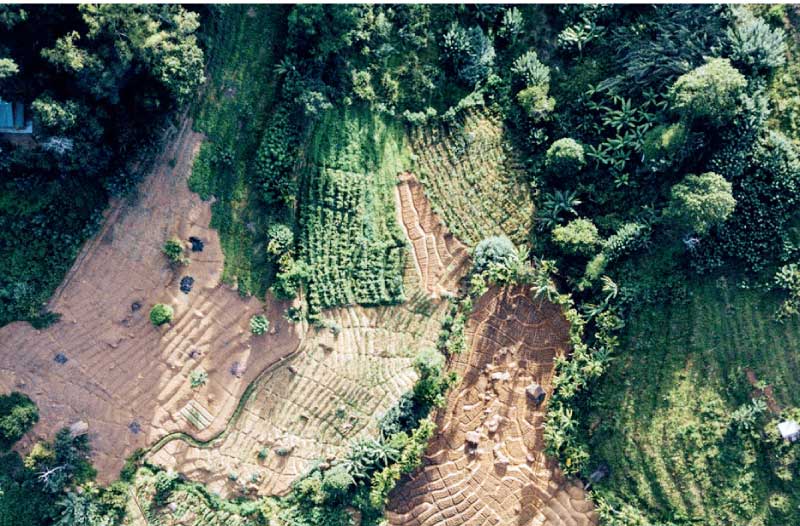Saturday Apr 19, 2025
Saturday Apr 19, 2025
Saturday, 10 September 2022 00:07 - - {{hitsCtrl.values.hits}}

Climate change increasingly shapes the patterns of human mobility across the world
 Climate change increasingly shapes the patterns of human mobility across the world, particularly in climate-vulnerable countries of the Global South. This does not necessarily mean that people move because of climate impacts, but that climate change becomes a contributing factor in their decision-making process and influences decision-making on the individual, household, and community level.
Climate change increasingly shapes the patterns of human mobility across the world, particularly in climate-vulnerable countries of the Global South. This does not necessarily mean that people move because of climate impacts, but that climate change becomes a contributing factor in their decision-making process and influences decision-making on the individual, household, and community level.
Human mobility in the context of climate change
Human mobility is an umbrella term that includes different categories of movement which can be classified based on key questions: Who is moving? Why are they moving, what is their level of agency? How far and to where? Does their movement take place within a country or across international borders? For how long are they moving? And, crucially, how does climate change influence this movement in direct and indirect ways?
Some of the main forms of climate-related mobility include migration—the permanent or temporary movement of persons away from their place of usual residence—, disaster displacement—the movement of persons forced to leave their home due to a disaster—, and planned relocation, which is the permanent movement of persons, assets, or infrastructure away from places exposed to climate impacts (for example, sea level rise). In addition, human immobility has become a topic of study in recent years, exploring both situations of involuntary immobility—people unable to move, so-called “trapped populations”—and voluntary immobility, which encompasses people unwilling to move for a variety of reasons, including their livelihoods, cultural identity, or sense of place.
According to the World Migration Report 2022, there are currently more than 280 million migrants worldwide, although many of them have moved for reasons unrelated to climate change, such as employment, family reunification, or conflict. The South Asian region in particular experiences significant migration streams, both internally and as international labour migration, while also being home to a large number of people at risk of displacement due to extreme weather events and climate-related disasters.
Planning for climate-related mobility
As mentioned above, climate change is rarely the only reason for people to move, except in cases of disaster displacement with clear climate attributability. However, research is making it increasingly clear that both sudden and long-term impacts of climate change have become underlying drivers of mobility that shape patterns of migration, displacement, and relocation around the world.
As highlighted in the recent Sixth Assessment Report of the Intergovernmental Panel on Climate Change (IPCC), “research shows with high confidence that climate variability and extremes have affected human mobility.” Migration and displacement are expected to increase with further warming, but “there are major knowledge gaps preventing more detailed assessments.” Therefore, it is critical to enhance the evidence base and close these knowledge gaps to support informed policy and planning decisions in the years to come.
Building on the knowledge that climate change shapes mobility patterns and that climate-related mobility will increase in coming decades, anticipatory planning should account for the needs of migrants, host communities, and families staying behind. What areas and communities are most at risk or most likely to move? Where does movement already take place in formal or informal ways, and where are people likely to move in the future? What kind of support and infrastructure will be required to accommodate the different forms of mobility? How can these forms of support be provided by different actors in a coordinated manner?
Mainstreaming human mobility considerations into development plans, climate-related plans (such as National Adaptation Plans), and sectoral plans could enable countries to set aside or mobilise resources, utilise them in precise and cost-effective ways, and proactively address mobility dynamics, helping them to either prevent forced migration or to turn mobility into a successful adaptation strategy which could distribute risks and diversify livelihoods.
Safe and orderly management of human mobility will be important for key sectors such as food systems, health, disaster risk management, ecosystems and natural resources, water and sanitation, transport, infrastructure, land use and landscape management, coastal and marine management, human settlements and migrant-friendly cities, labour, or education. In addition to sectoral concerns, there are also cross-cutting issues to be recognised and considered, including social protection, gender, youth, disabilities, special needs, poverty, and intersectionality between different sociocultural and economic vulnerabilities.
Expanding the evidence base
To support planning processes on the national level or for specific sectors, there is a need for more information and evidence on climate-related human mobility. Building databases on migration, displacement, and immobility could be supported by mainstreaming mobility-related indicators into existing data collection processes and facilitating an exchange of information between different actors, including government entities, researchers, civil society, communities, and the private sector.
It is clear that climate change will continue to influence human mobility, and that the patterns and dynamics of human mobility will have considerable impacts on different economic and societal sectors. Dialogues between stakeholder groups, countries, and regions can contribute to enhancing the collective knowledge base and understanding of human movements within and between countries, which could then support the integration of human mobility into planning and policy processes on different levels and timeframes.
(The writer works as Director – Research and Knowledge Management at SLYCAN Trust, a non-profit think tank based in Sri Lanka. His work focuses on climate change, adaptation, resilience, ecosystem conservation, just transition, human mobility, and a range of related issues. He holds a Master’s degree in Education from the University of Cologne, Germany and is a regular writer to several international and local media outlets.)